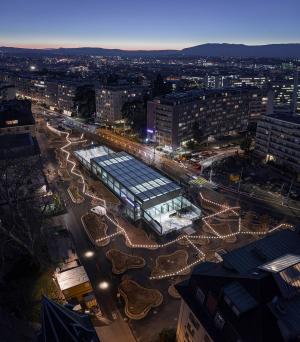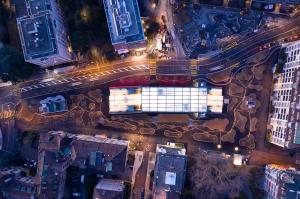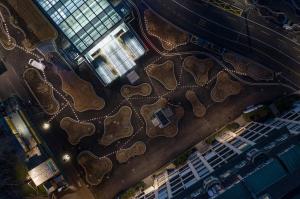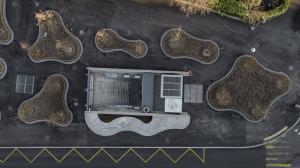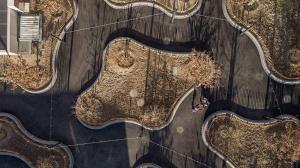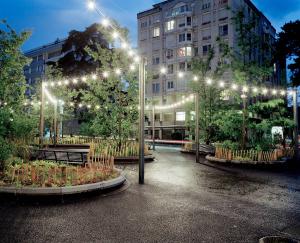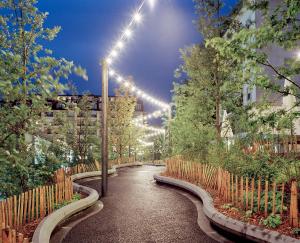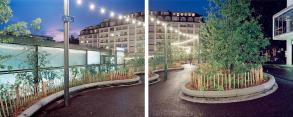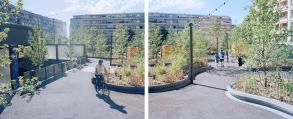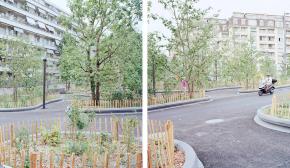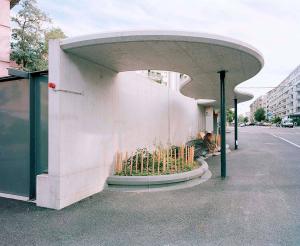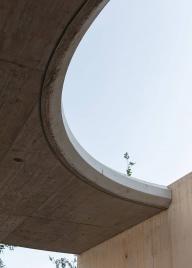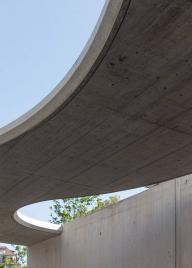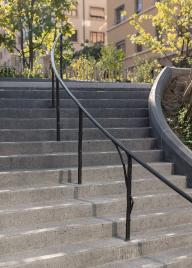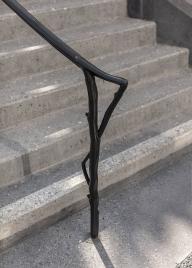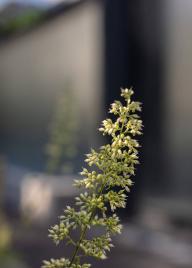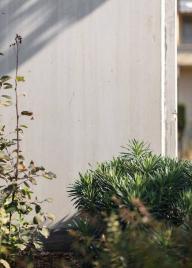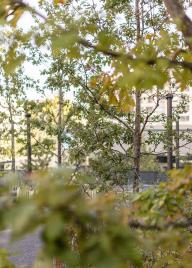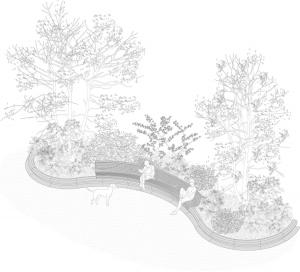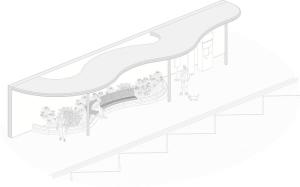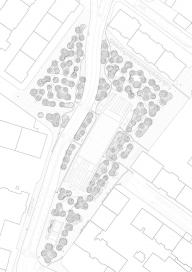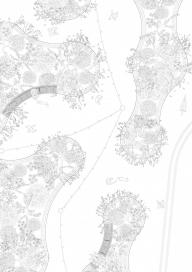日內(nèi)瓦CEVA車站延伸了�,或者說將自己植入了多元化關(guān)系的理念中���。這座由Jean Nouvel和Eric Maria設(shè)計(jì)的新基礎(chǔ)設(shè)施重新定義的日內(nèi)瓦地區(qū)的可達(dá)性���,以一種友好的連接方式介入到人們的生活之中��?���;疖噺牡叵麻_過�,人們可以上下穿行,穿過基礎(chǔ)土壤的垂直分層�,進(jìn)入一片由138棵橡樹和上百種其他植物共同組成的生長空間。
The project of the CEVA station in Geneva extends, or installs itself within this idea of multifaceted relationships. The new infrastructure, thought and designed by Jean Nouvel and Eric Maria as a piece of a network of stations redefining the Geneva region accessibilities, relates to our intervention, in a companionship connection. Trains pass by, in the underground, and people go up and down, traversing the vertical layers of the infrastructural soil, to discover a growing condition, composed of 138 oak trees and hundreds of other planted companions.
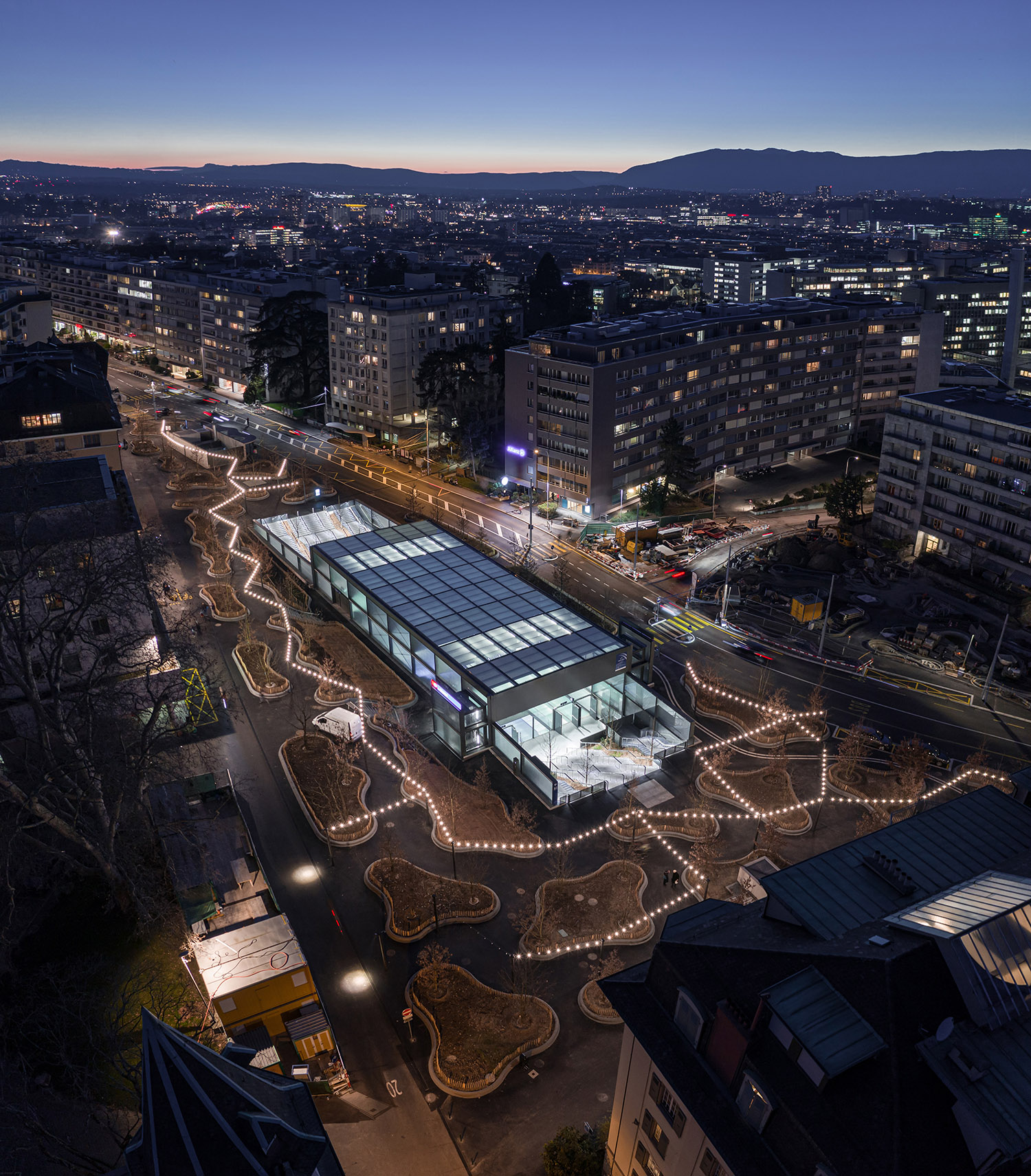
▲項(xiàng)目鳥瞰��,新車站及周圍景觀�,aerial view of the project, the new station and the surrounding landscape

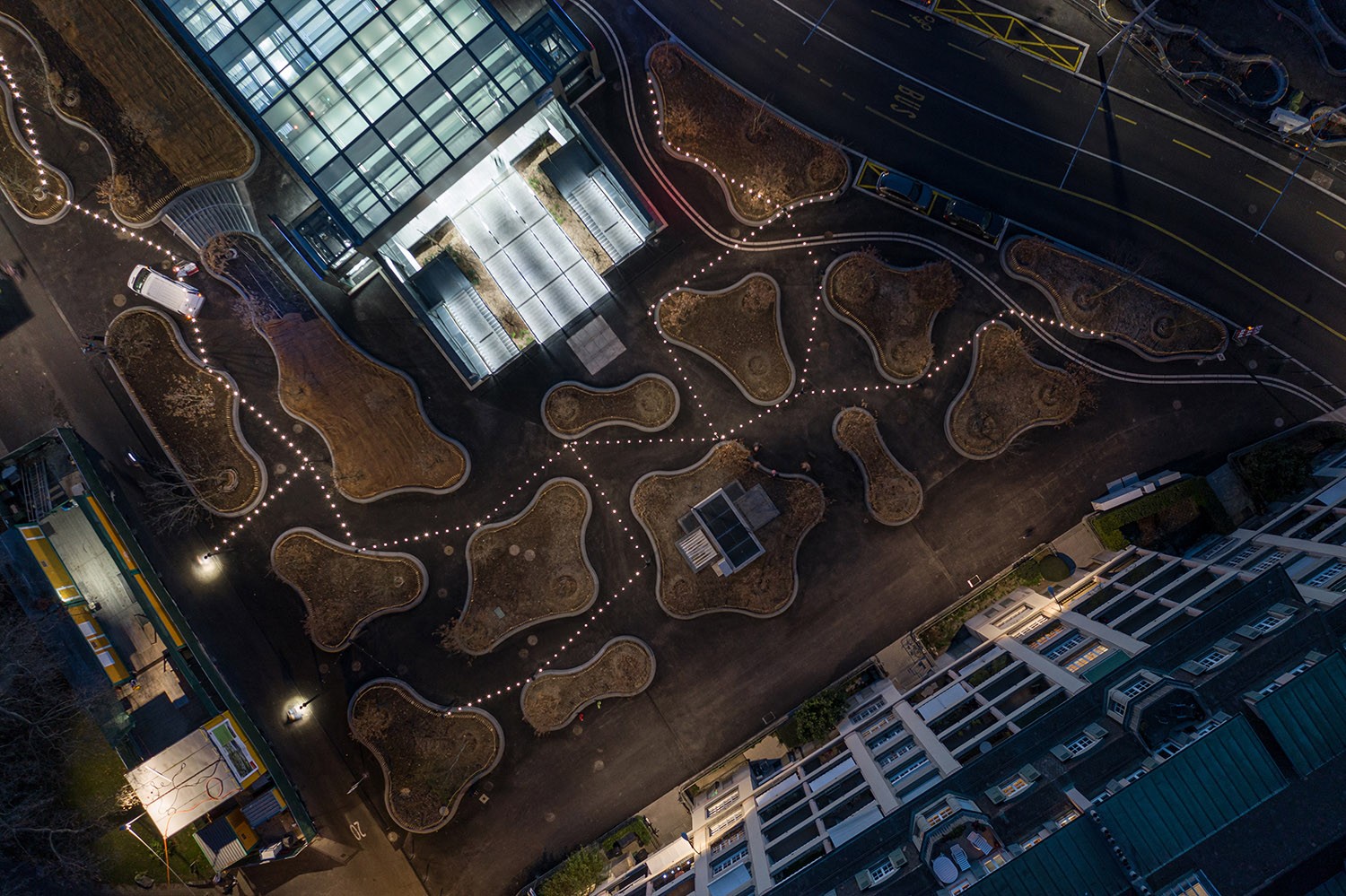
▲頂視圖,景觀由形狀不一的綠島組成����,top view, landscape composed of islands in different shapes
設(shè)計(jì)將簡單的“種樹”想法與新區(qū)域火車線路的到達(dá)與出發(fā)結(jié)合。從地下開始�����,逐漸適應(yīng)緩慢曲折的線路����,形成一種在樹下和茂密的種植地面上“放浪”的體驗(yàn)。這些微型生態(tài)系統(tǒng)種植在專門的綠島上�����,人們不一定可以進(jìn)入�����。他們還有許多其他去處���,比如坐在綠島的邊緣上休憩�����、交談����,或使用專門的城市家具�����。
The simple idea of “just” planting trees, accompanies the arrivals and departures of the new regional train line. Flows from the underground transform, adapt their pace into slower meandering routes, proposing a sort of “flaneur” experience, under and with the trees and their intense planted ground. These micro eco-systems are hosted in dedicated islands, not necessarily accessible to humans. They have enough space elsewhere. They can sit, enjoy their pauses and chats on the borders of these islands and on dedicated urban furniture.
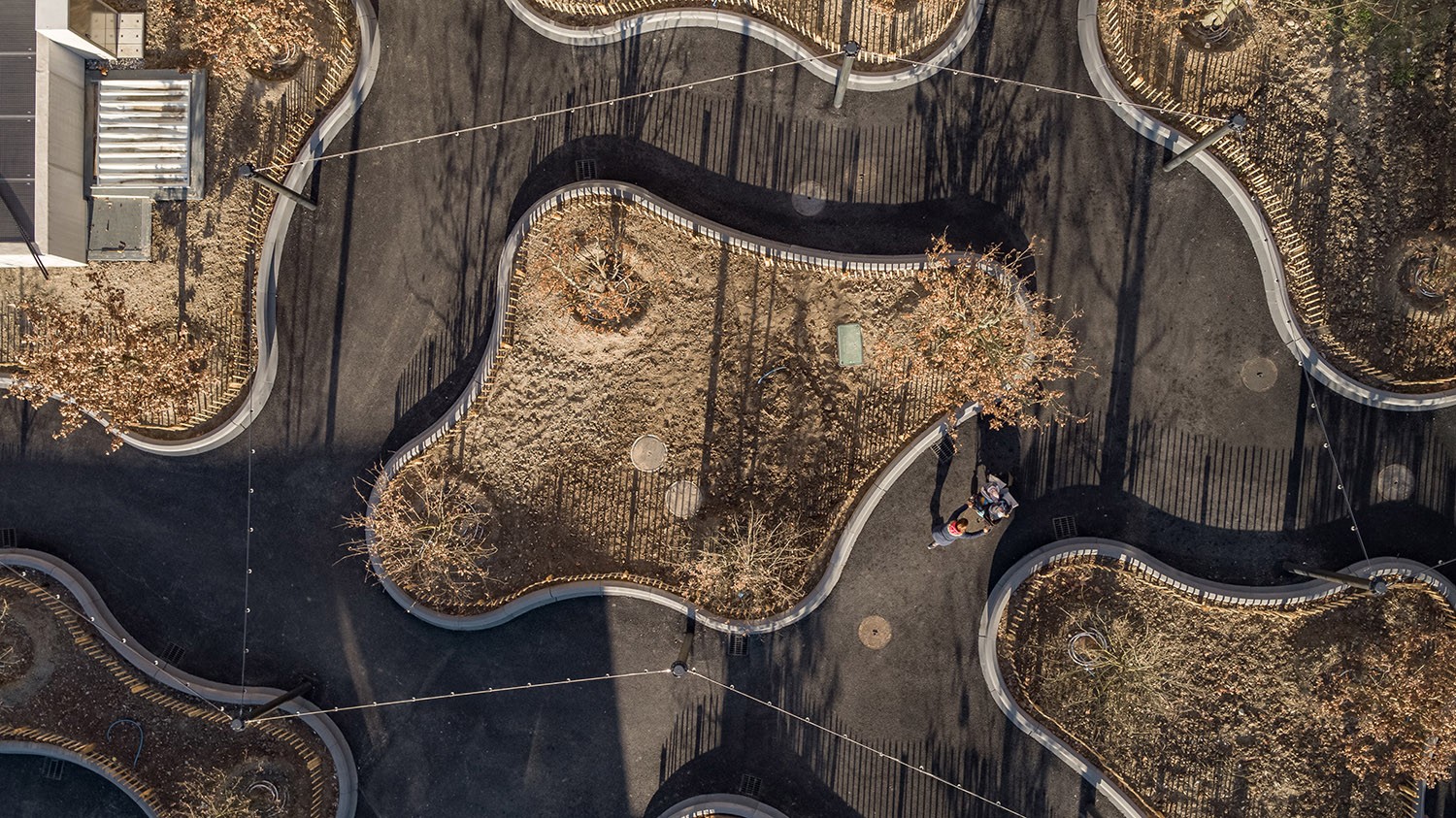
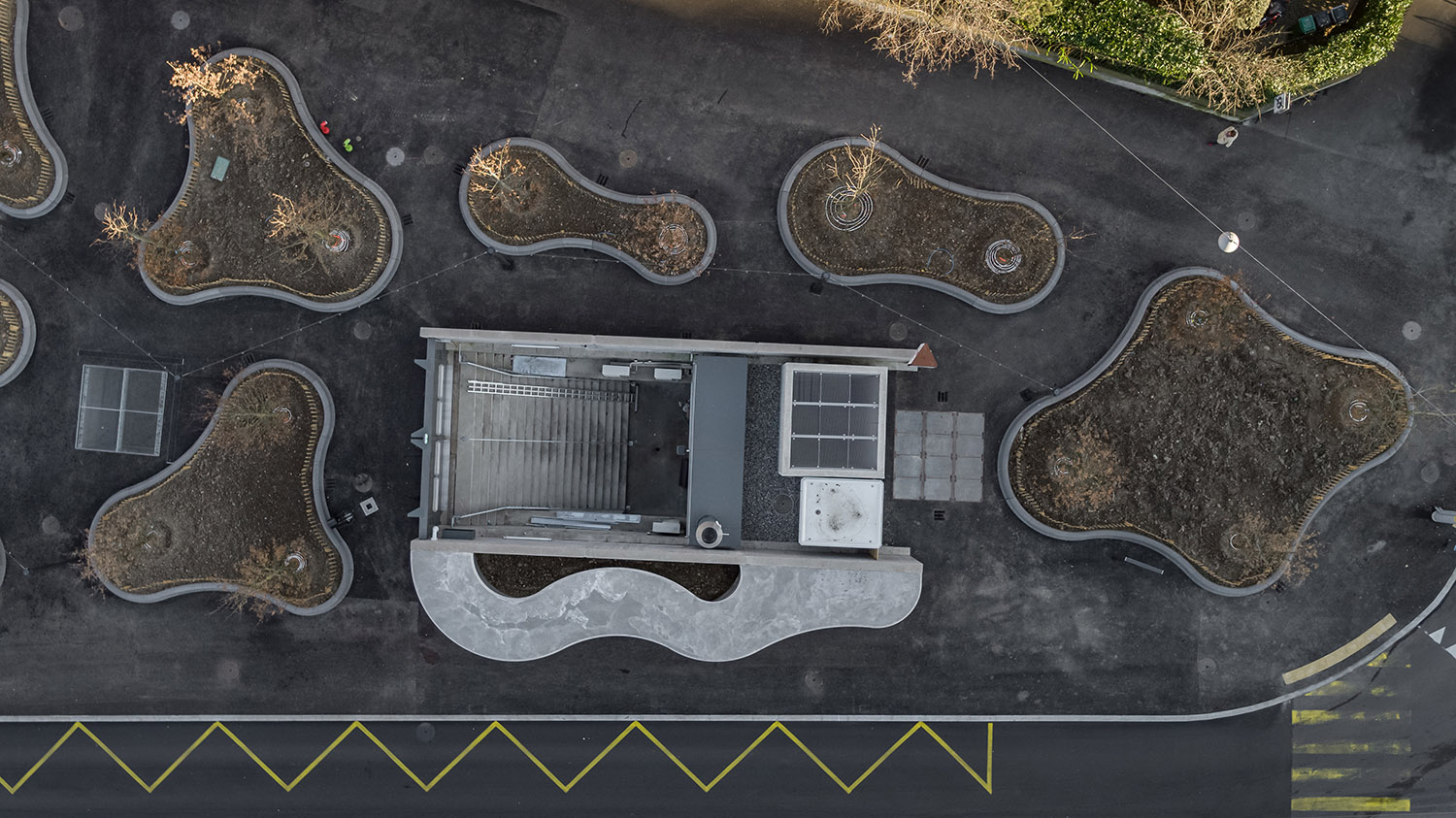
▲綠島上種植微型生態(tài)系統(tǒng)����,micro eco-system hosted in the islands
Joseph Beuys為1982年卡塞爾文獻(xiàn)展設(shè)置的7000棵橡樹成為了藝術(shù)世界的一個(gè)轉(zhuǎn)折點(diǎn)��。在簡單的概念指引下�,藝術(shù)家成功地利用藝術(shù)行為激活了環(huán)境意識(shí)�����,并且不斷發(fā)揚(yáng)壯大����。同樣在1980年代,人們還見證了針對(duì)地球生物暴力的迅速升級(jí)�。從那以后,盡管人們嘗試提高環(huán)境意識(shí)以對(duì)抗這種傾向���,但收效甚微�。
此次藝術(shù)干涉最大的意義在于它與卡塞爾市建立起了真正的契約��。通過契約關(guān)系的介入���,藝術(shù)作品獲得了強(qiáng)大的力量���。其副標(biāo)題同樣重要:城市造林����,而非城市管理�����。這項(xiàng)巨大的工程難以找到足夠的資金�����,幾經(jīng)探討和論證��,它最終作為政治議程的一環(huán)得以實(shí)現(xiàn)��。這大概是提案最具說服力的一點(diǎn)����。從藝術(shù)家的立場和行為出發(fā)���,Beuys希望項(xiàng)目可以成為一個(gè)政治和民生的議題:植物與人類以外的動(dòng)物世界在城市肌理中的出現(xiàn)�,是呼吸與活力的必要之物����。
Joseph Beuys’ 7000 oaks for the 1982 Documenta in Kassel constituted a turn in the art world. By a quite simple conceptual gesture the artist managed to use the power of art discourse and action to activate an environmental concern that has grown ever since. This happened in the1980s, the same decade which saw a very substantial acceleration of violence towards all living beings on earth. Ever since, we have been trying to develop our consciousness to counter this movement, with a relatively poor success.
One of the most interesting issues about his art gesture is that it constituted a real contract with the city of Kassel. It was through the engagement of a contractual relation that the piece acquired all its strength. Its subtitle was important as well: City forestation instead of City administration. The discussions, polemics, and difficulties to find the funds for this enormous project had the consequence of it being treated exactly as a moment or point of a political agenda. This is probably the most powerful argument of the proposal. From his artist position and posture, Beuys anticipated what was going to become a political and civic issue: the presence of the vegetal and animal (other-than-human-living-beings) world in urban fabrics as a breathing, vital necessity.

▲車站出入口與樹木相結(jié)合�����,trees integrated with the entrance of the station
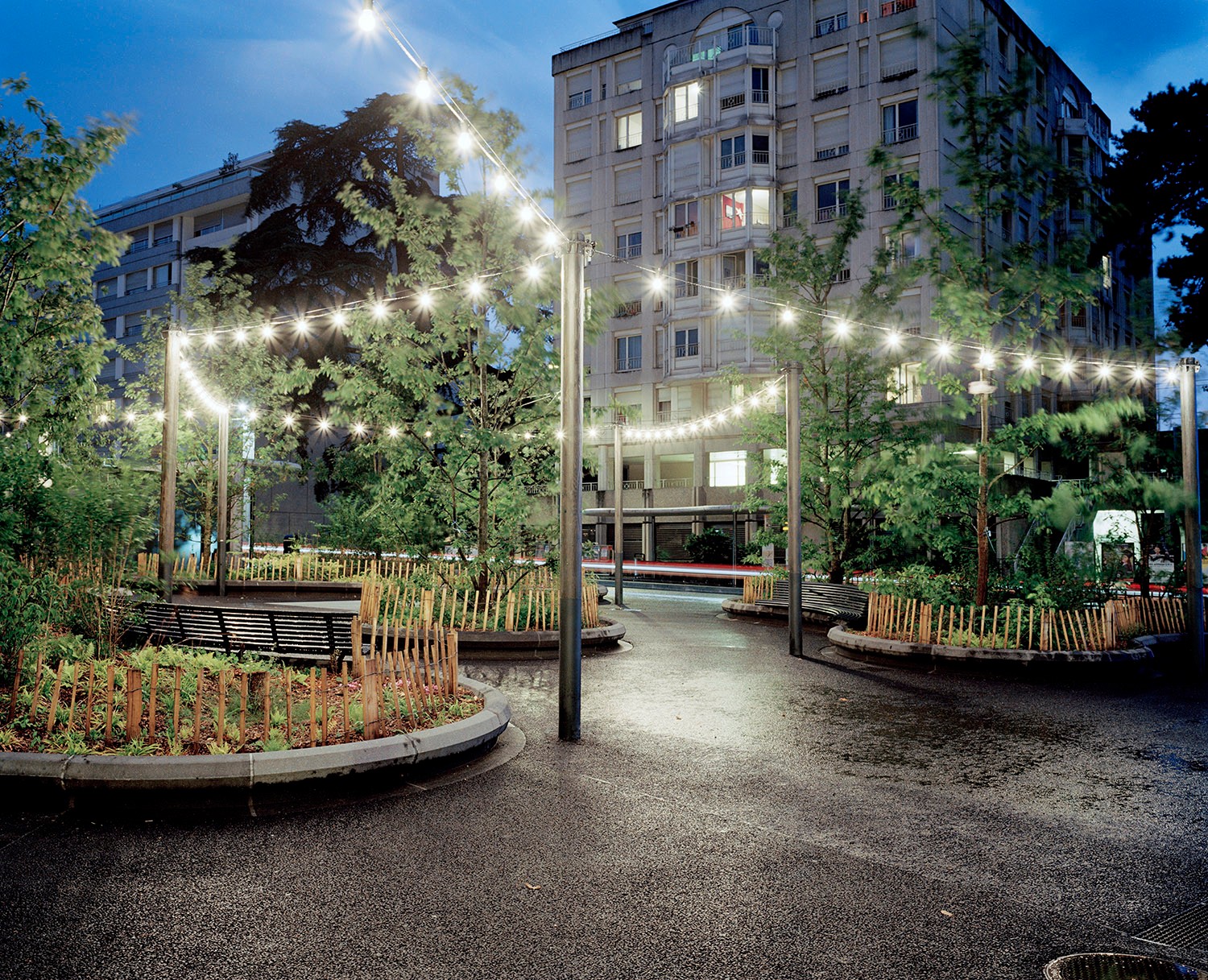

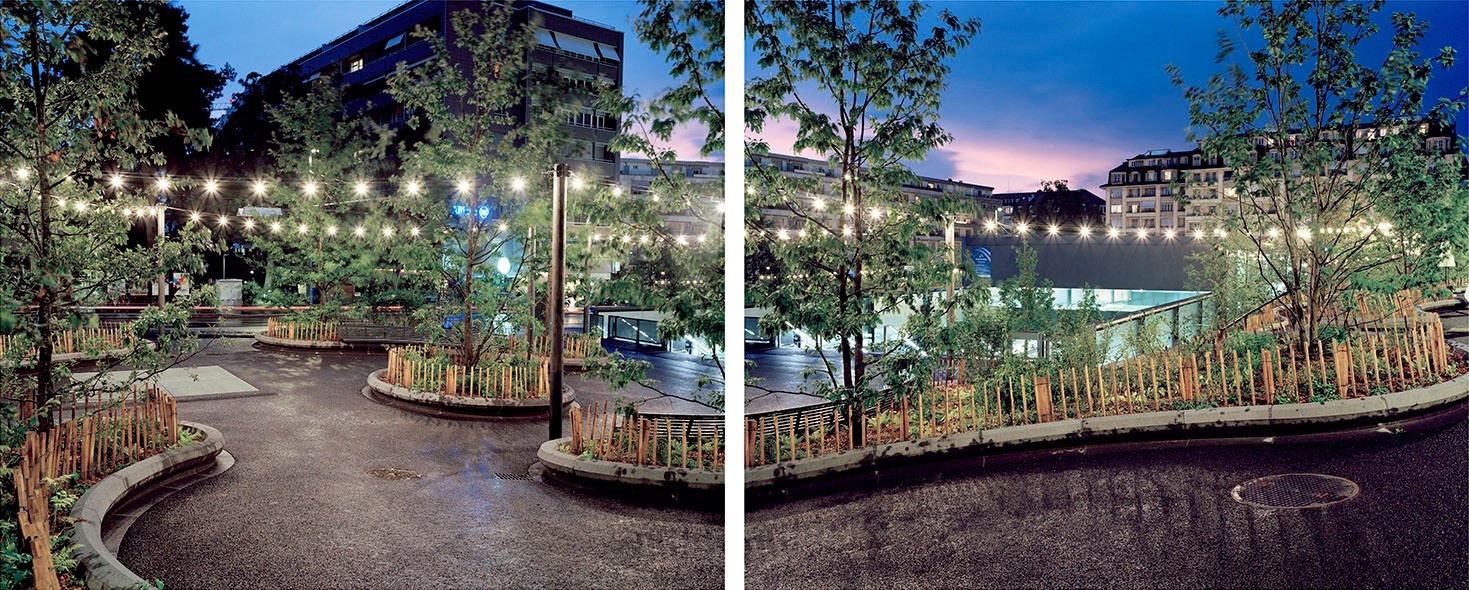
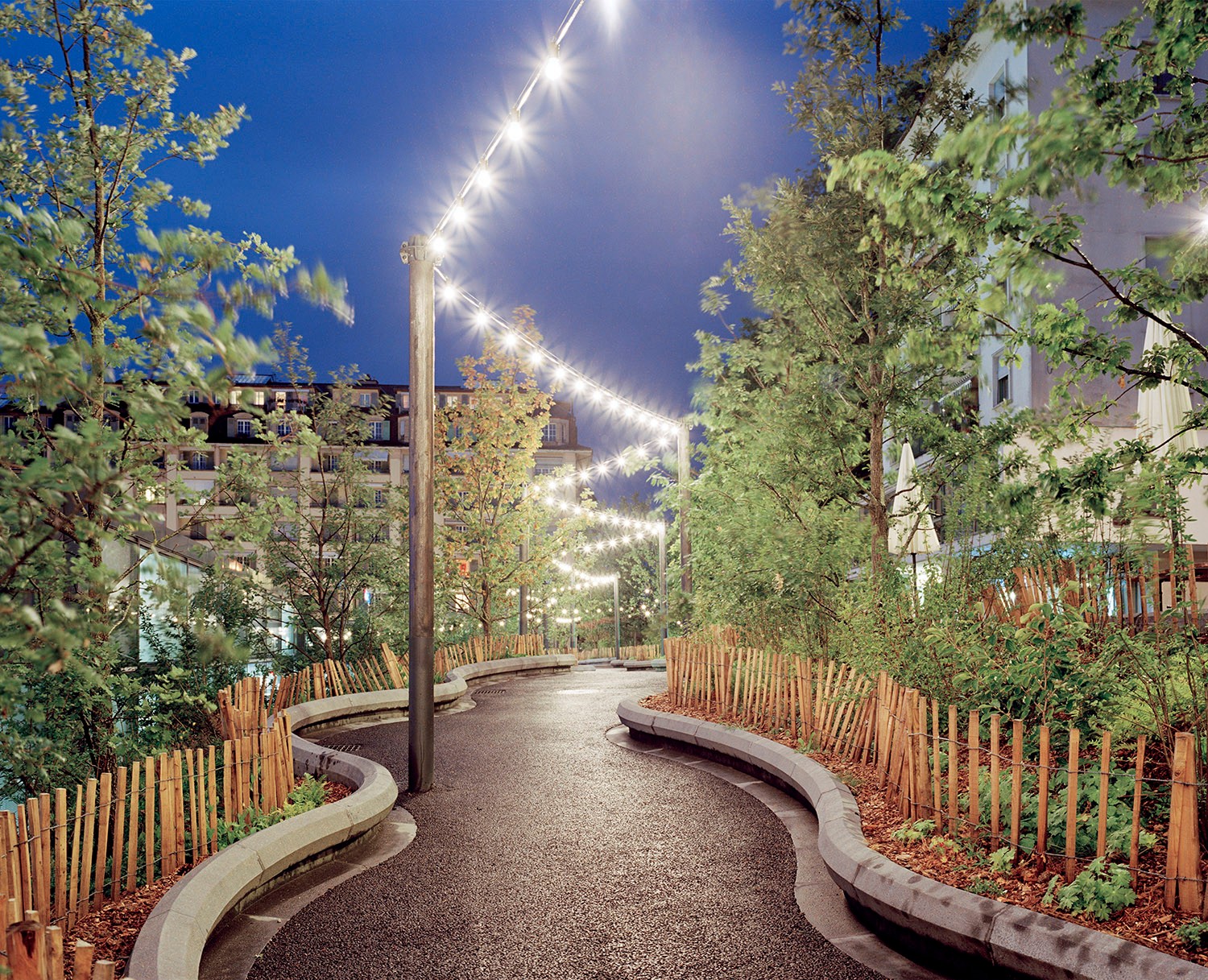
▲植物進(jìn)入城市空間�����,plants presented in urban space
這個(gè)議題的另一個(gè)觀點(diǎn)是:共生����。人類需要依靠其他生物將大氣轉(zhuǎn)變?yōu)榭梢院粑难鯕?。這些其轉(zhuǎn)化作用的、美麗的有機(jī)機(jī)器�,亦可以是人類的伙伴,與人類共同生活�����。植物以謹(jǐn)慎���、甚至壯觀多變的形式成為人們生活的一部分����,反之亦然。法國植物學(xué)家Francis Halle曾經(jīng)廣泛談?wù)撨^樹木的審慎���。盡管樹木十分壯闊�,但它們從不會(huì)鄙視其他相對(duì)弱小的生物��。樹木是和平的伙伴��。
There is another perspective on this: co-existence. We depend on other living beings to transform the atmospheric air into breathable oxygen. We can also think of these beautiful transforming organic machines as companions, creatures that live with us. The discreet, sometimes majestic, dynamic presence of plants is part of our lives and our lives are symmetrically part of theirs. French botanist Francis Halle has talked extensively about the discretion of trees, how their rather important presence does not involve any sort of arrogance over other smaller and less powerful beings. Trees are peaceful companions.
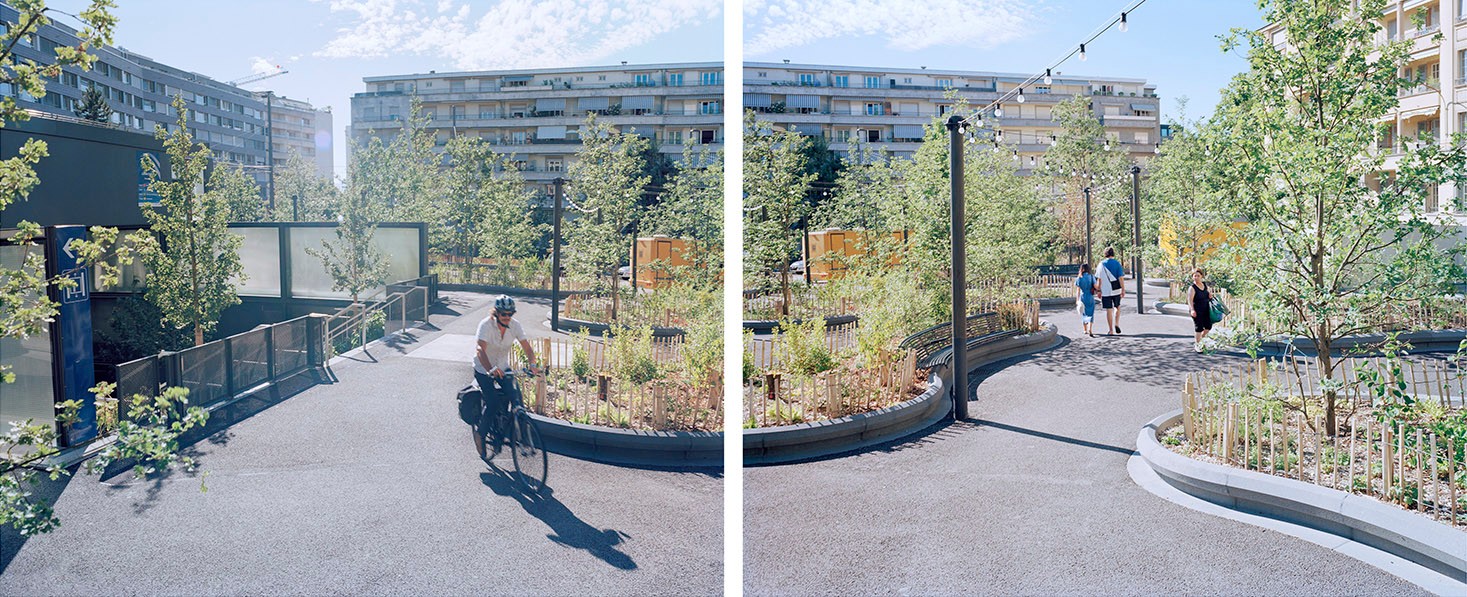
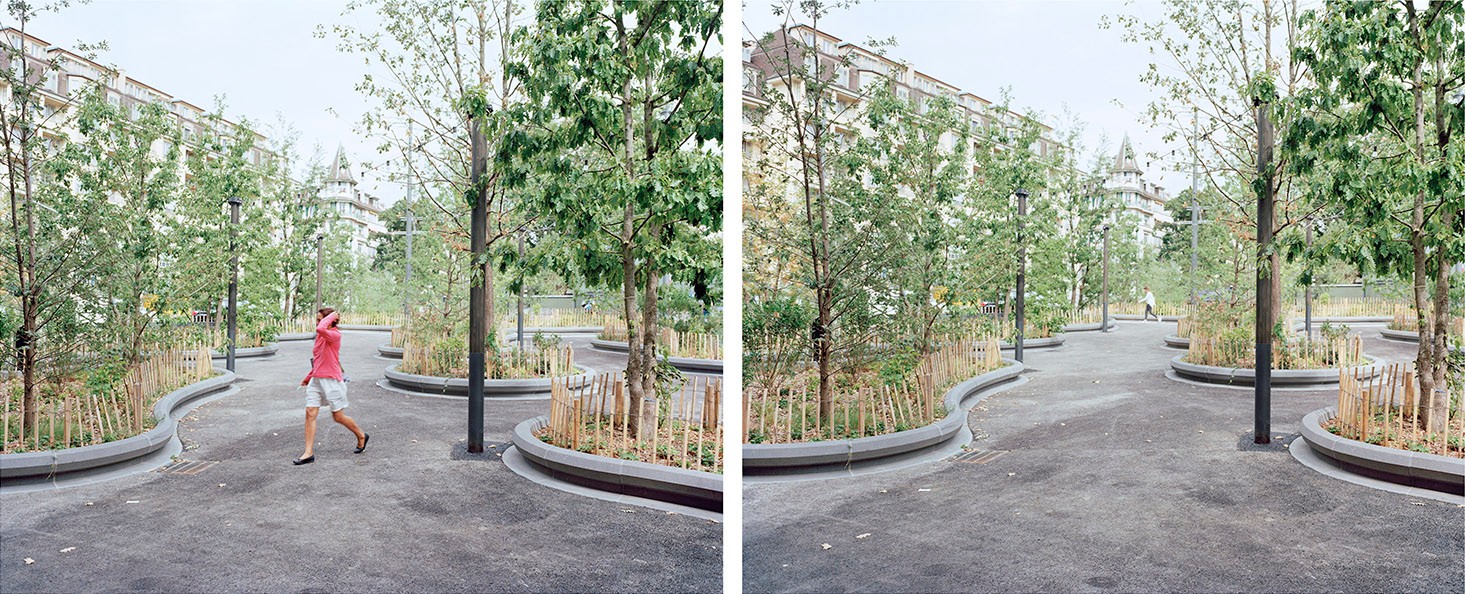
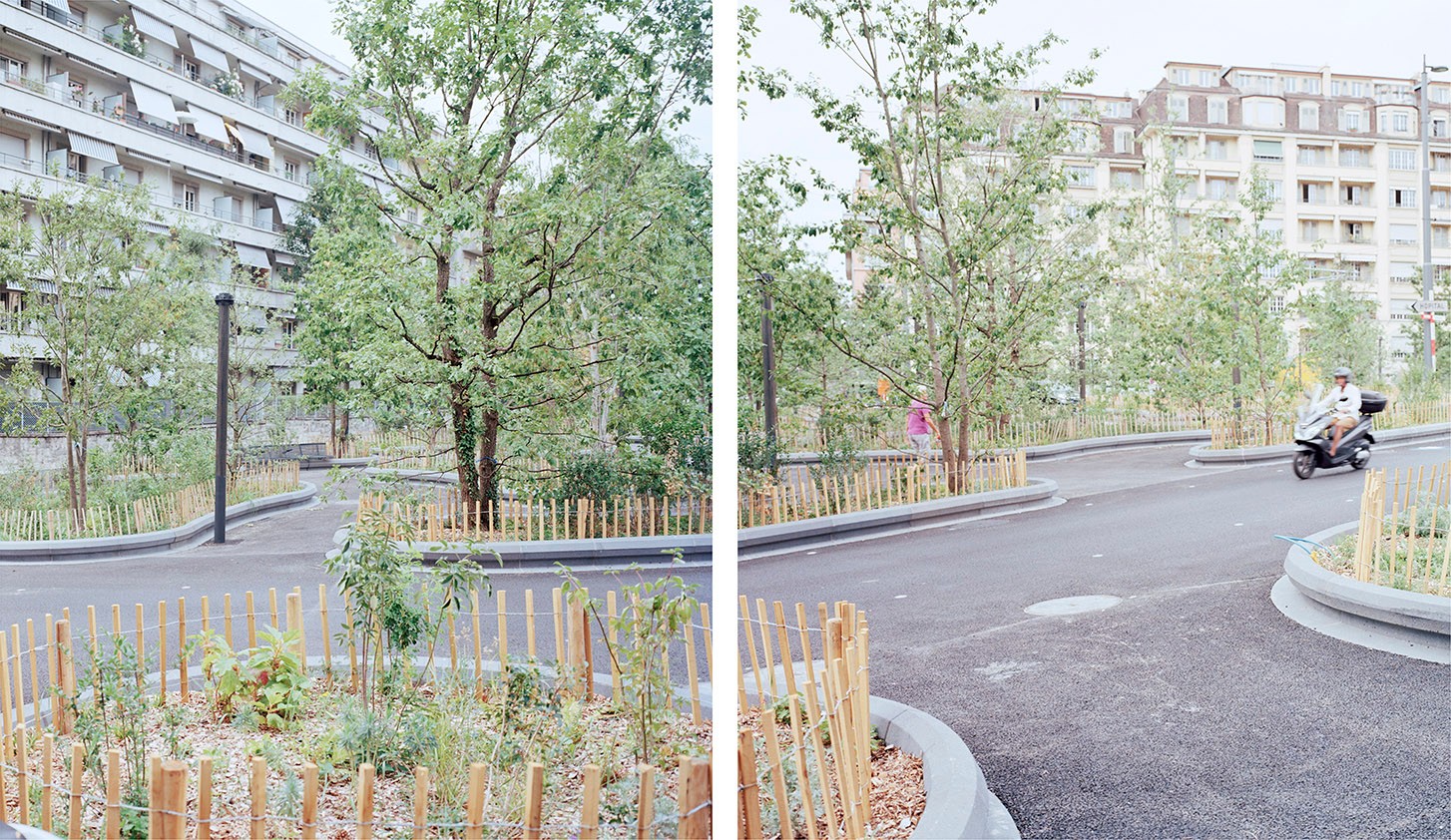
▲人們的活動(dòng)與綠島�,人與其他生物共生����,people’s activities among the islands, co-existence of human and other beings
城市更新包括能量推動(dòng)和城市變革,最終成長為更加復(fù)雜的自然����,而非僅僅是由笨重的材料和機(jī)械的活動(dòng)組成。 “物品”與“生命”交織���,相互作用��,使城市纖維結(jié)合成為了一套緊密的���、差異化的、并且令人激動(dòng)的組織��。在這里,大多數(shù)人都將享受在復(fù)合的環(huán)境中和睦相處�。
Cities renew, evolve through dynamism and urban mutation; they grow as a more complex nature than one just made out of inert materials and mechanical fluids. All of it is part of an intertwined ensembles of “things” and beings that interact and make the urban fabric a tense, contrasted and exciting tissue where most of us enjoy being in a composite togetherness.
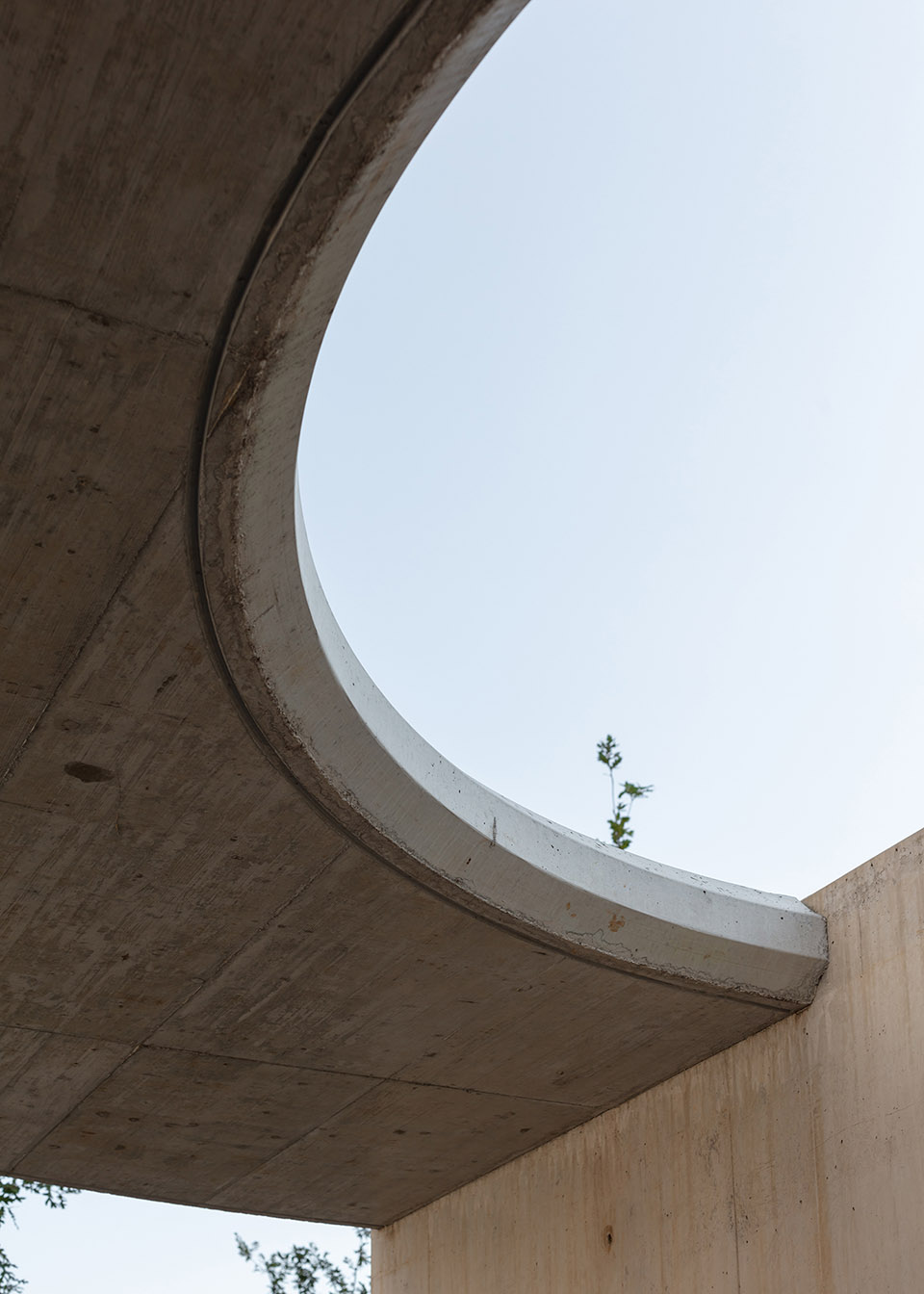
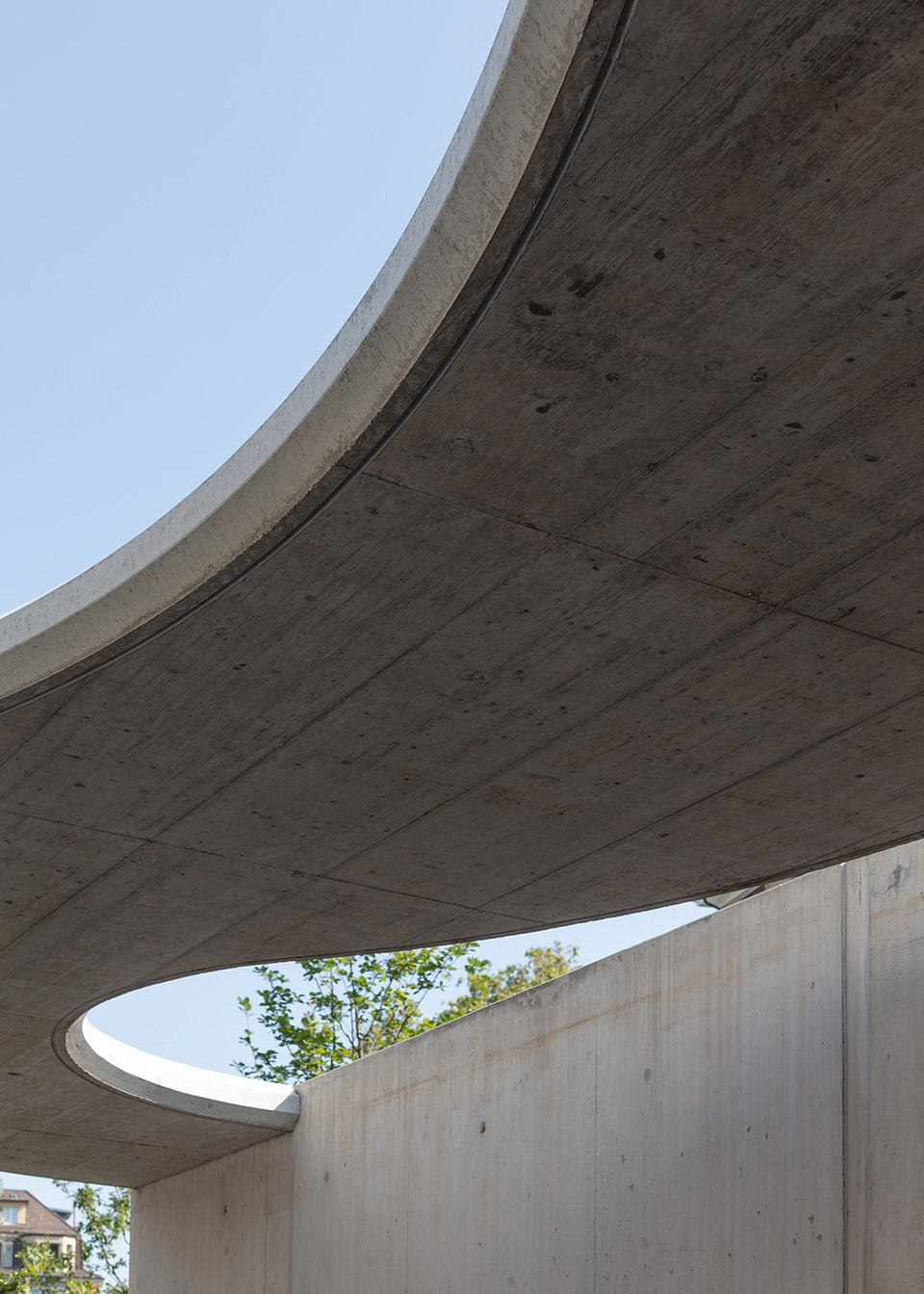
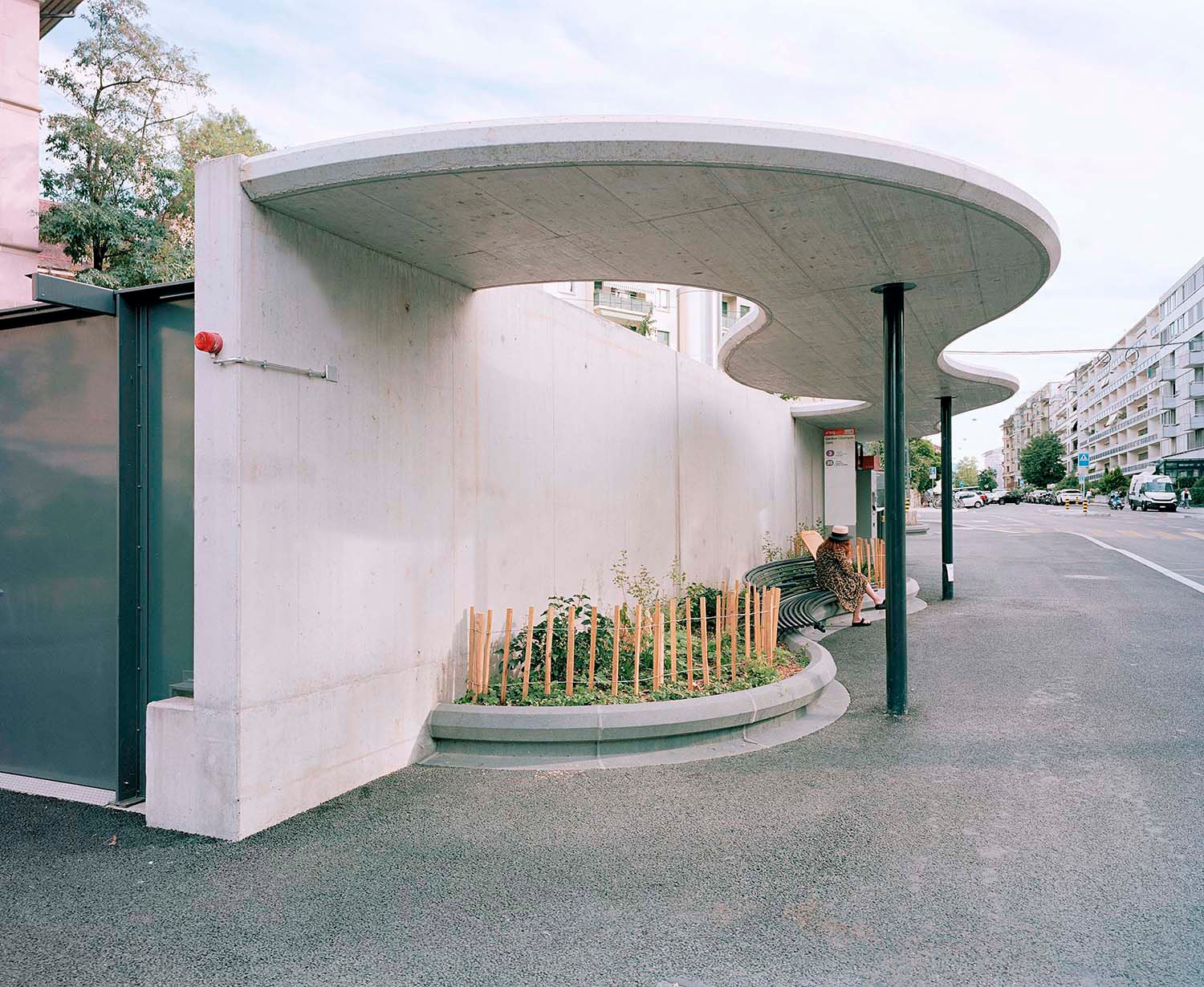
▲與綠島結(jié)合的公交車站,bus station integrated with the islands
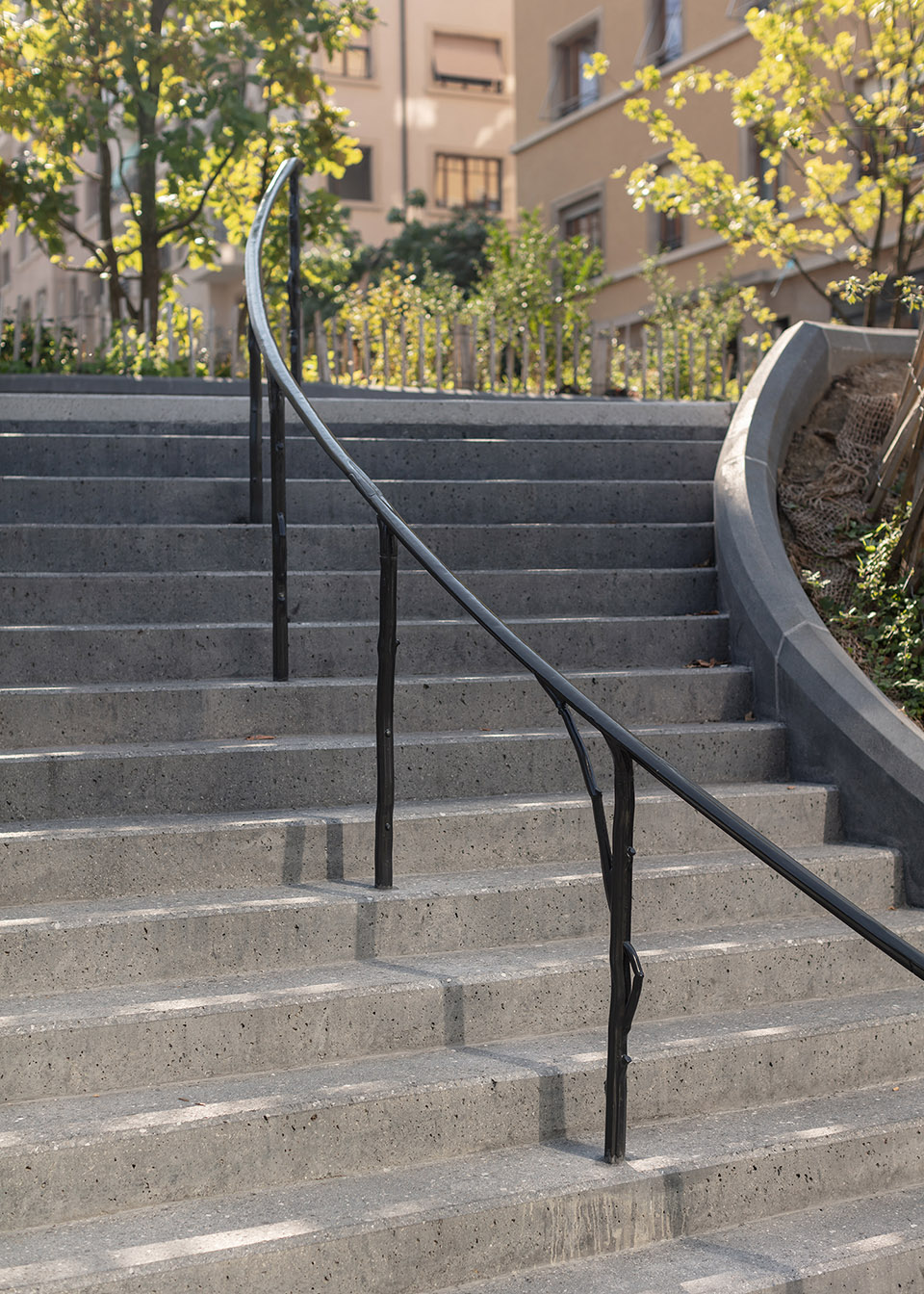
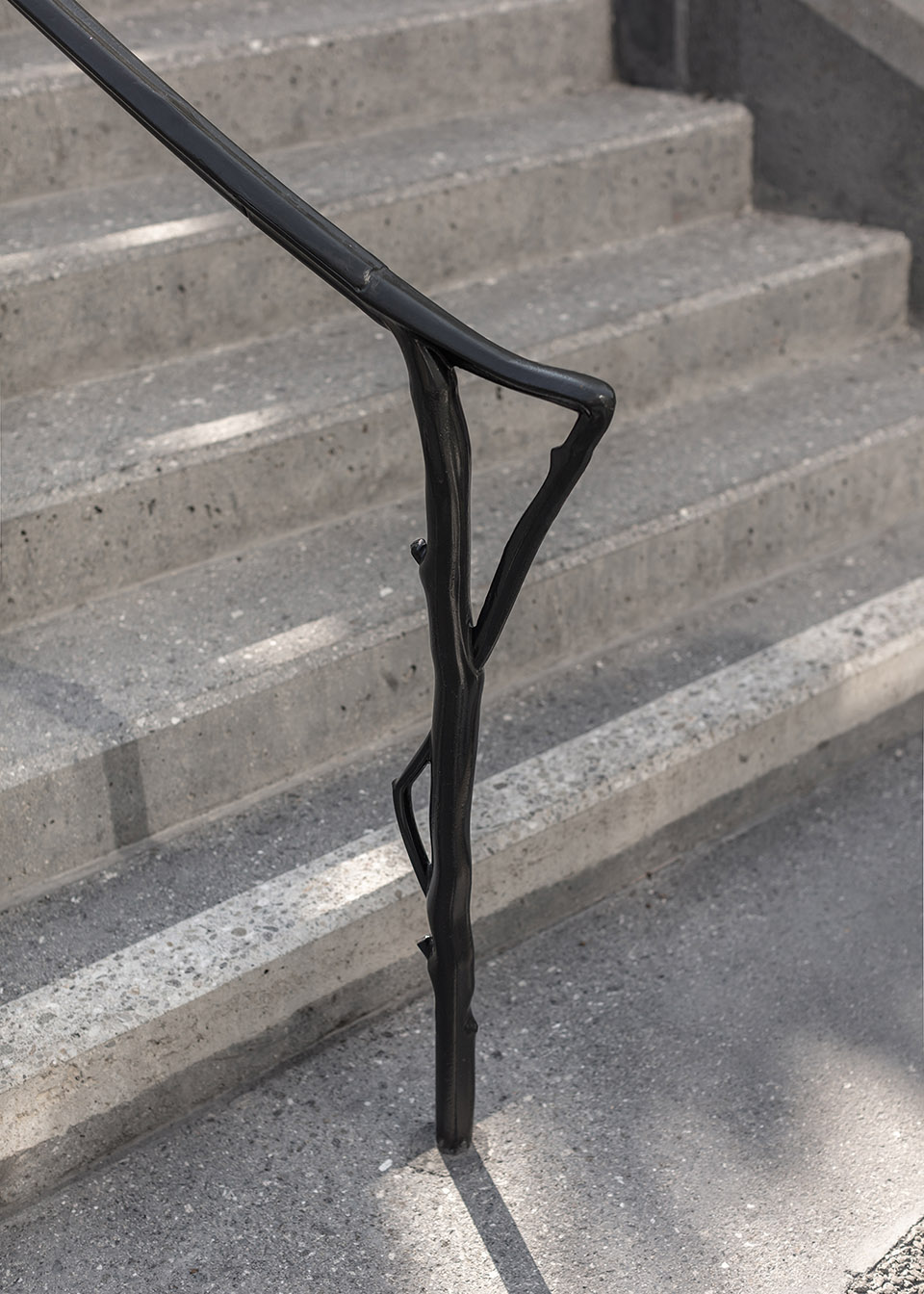
▲采用自然形態(tài)的欄桿���,handrail using natural form
耐心等待����,用心體驗(yàn)��,隨著時(shí)間流逝�,這里將成為一個(gè)獨(dú)特而美麗的生態(tài)系統(tǒng)。人���、樹木����、微生物�����、昆蟲����、以及其他植物和諧共處�。有些人也許會(huì)匆忙乘坐電梯去趕下一班列車��,另一些人則可以放慢呼吸��,在火車線路的紅燈上觀察��、成長�����、討論��,以一種彈性的目光看待世界�。
With time, patience and experience, the place will become a specific and beautiful eco-system, where people, trees, microbes, insects, other plants will co-exist peacefully. Some of us will still be in a hurry and dig down the escalators to take the next train, some others will breathe slowly observing from above the red lights of the train lines for decades, growing, discussing, and looking at the world resiliently.
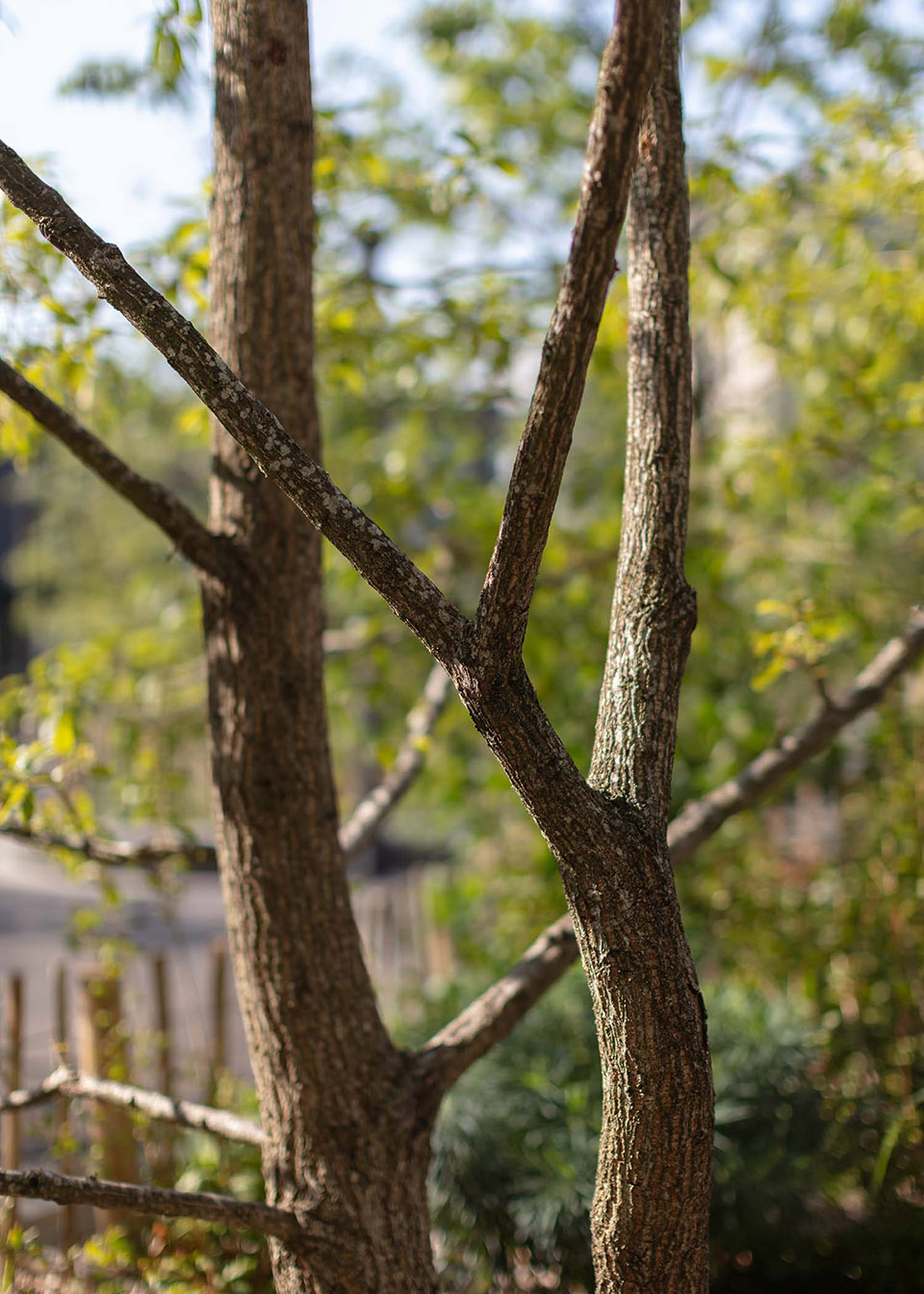
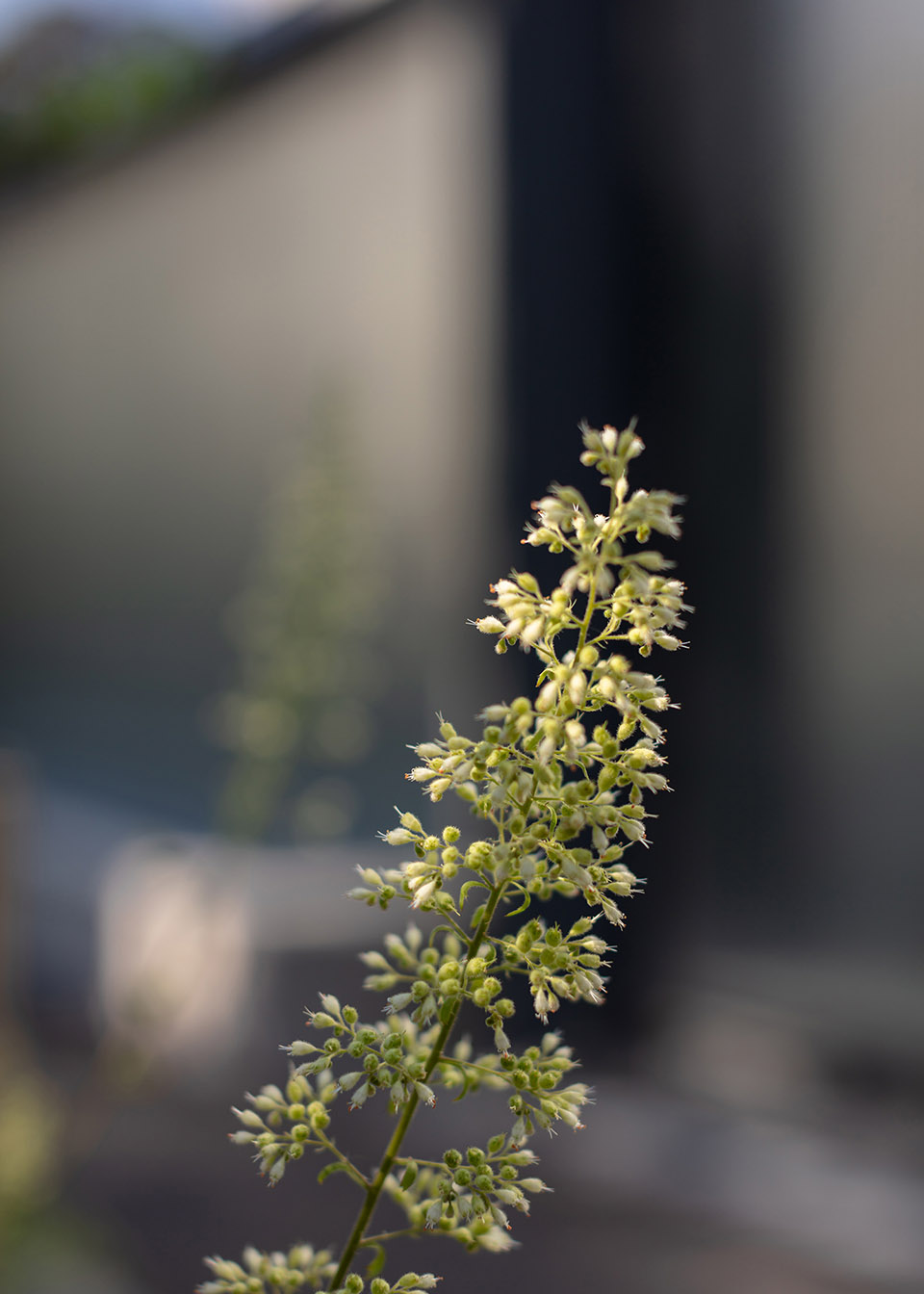
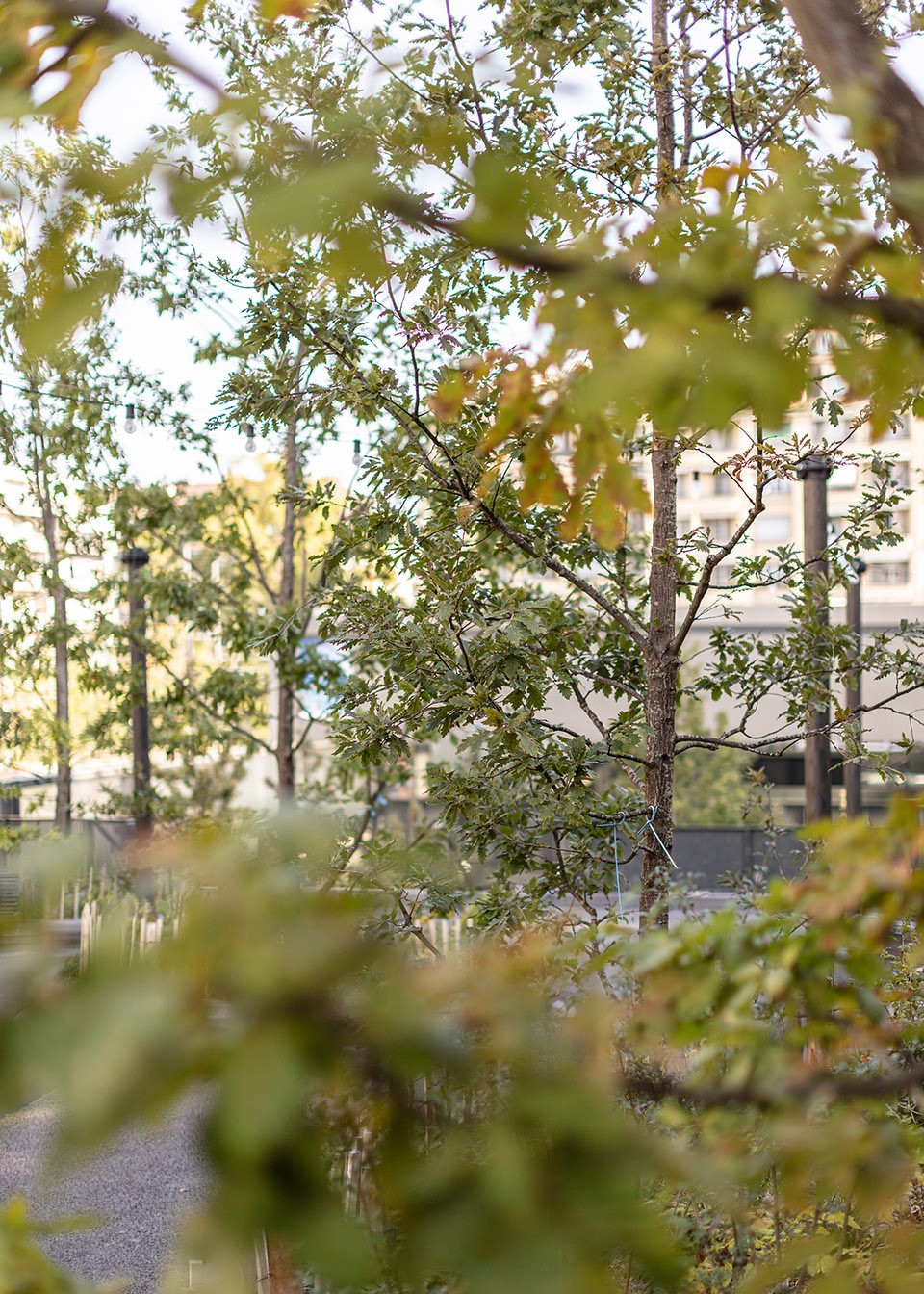
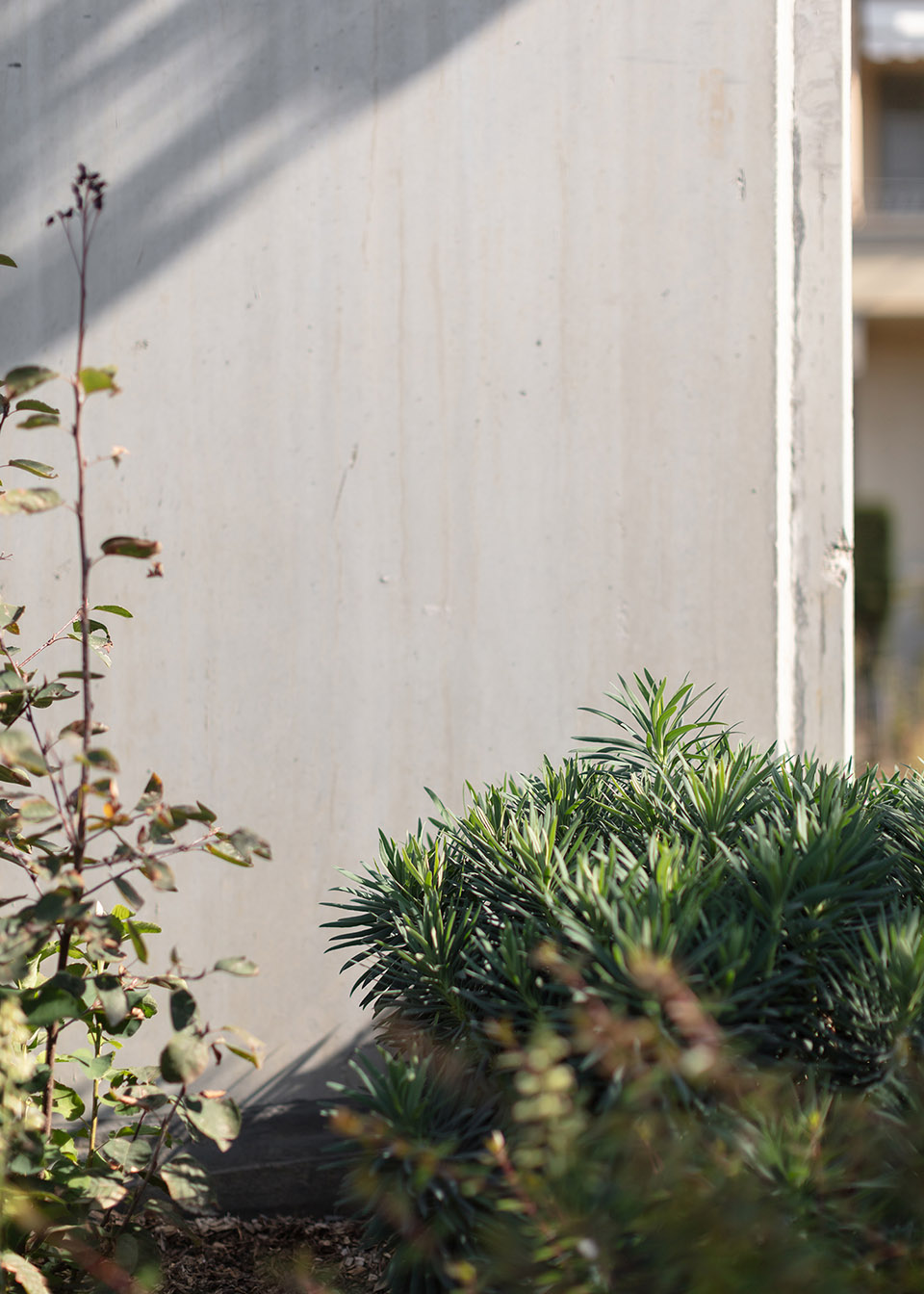
▲豐富的植物成為美麗的生態(tài)系統(tǒng)���,diverse plants creating a beautiful eco-system
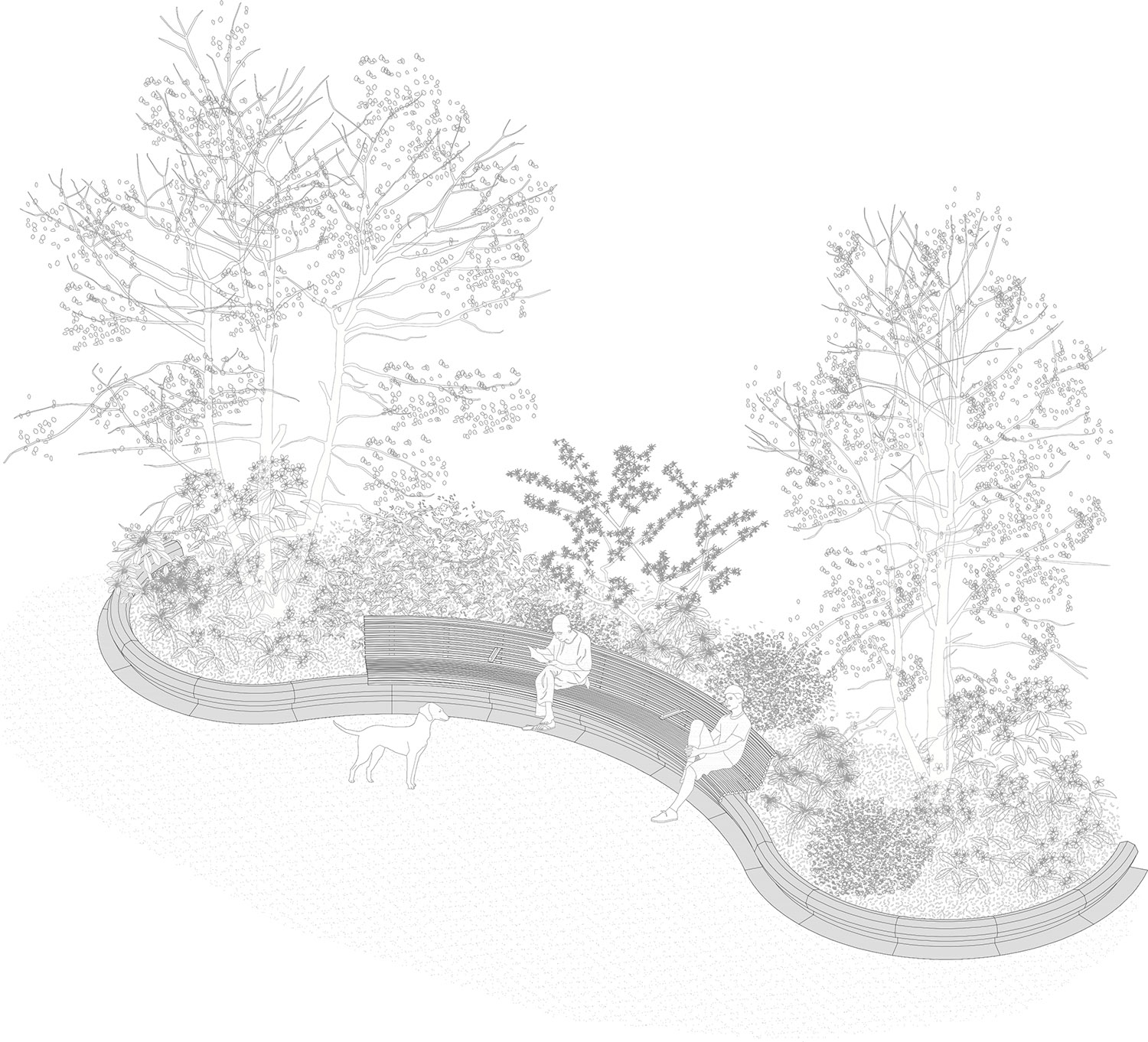
▲綠島軸測圖���,axonometric of one island
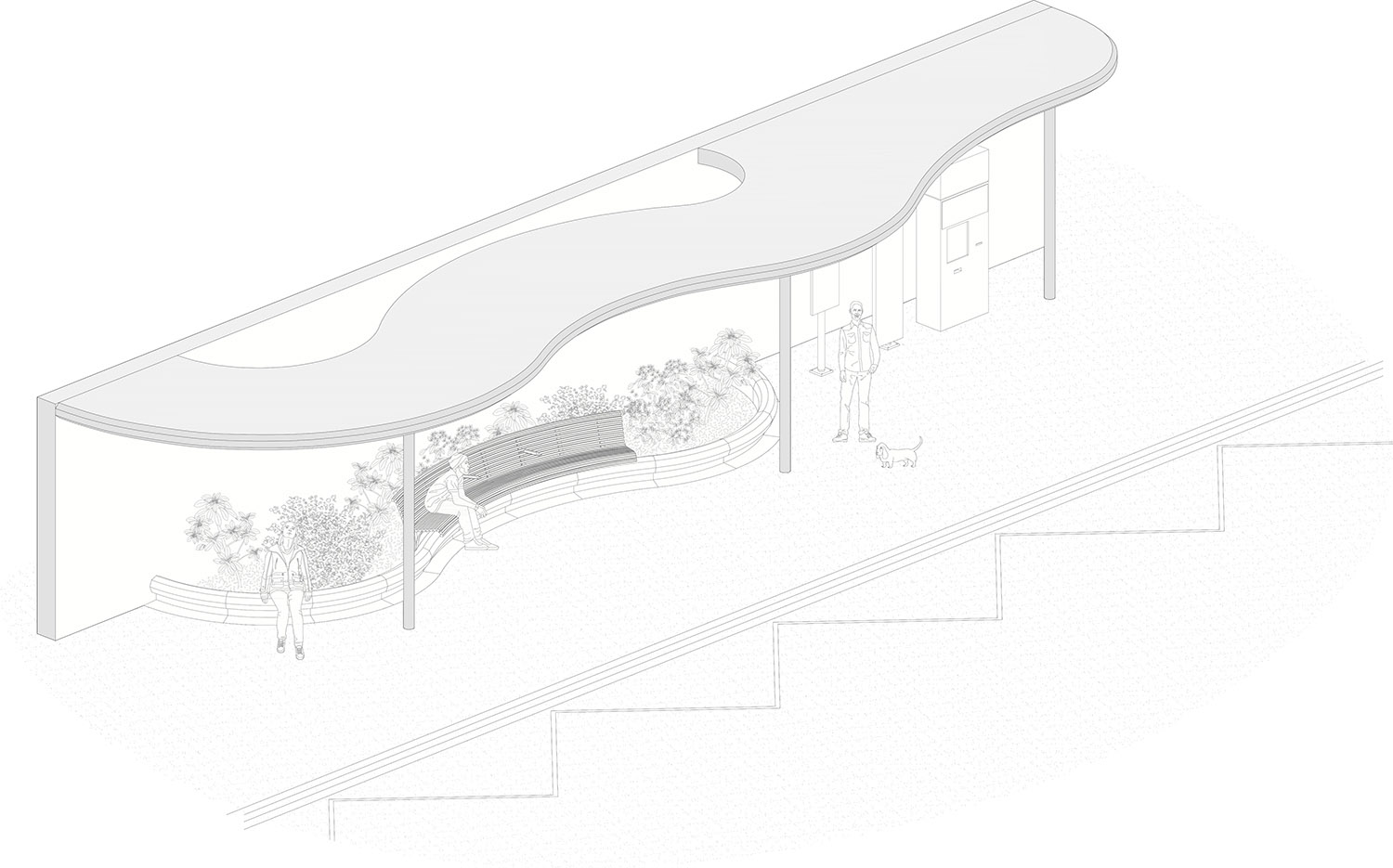
▲公交車站軸測圖,axonometric of the bus station

▲總平面圖�,site plan
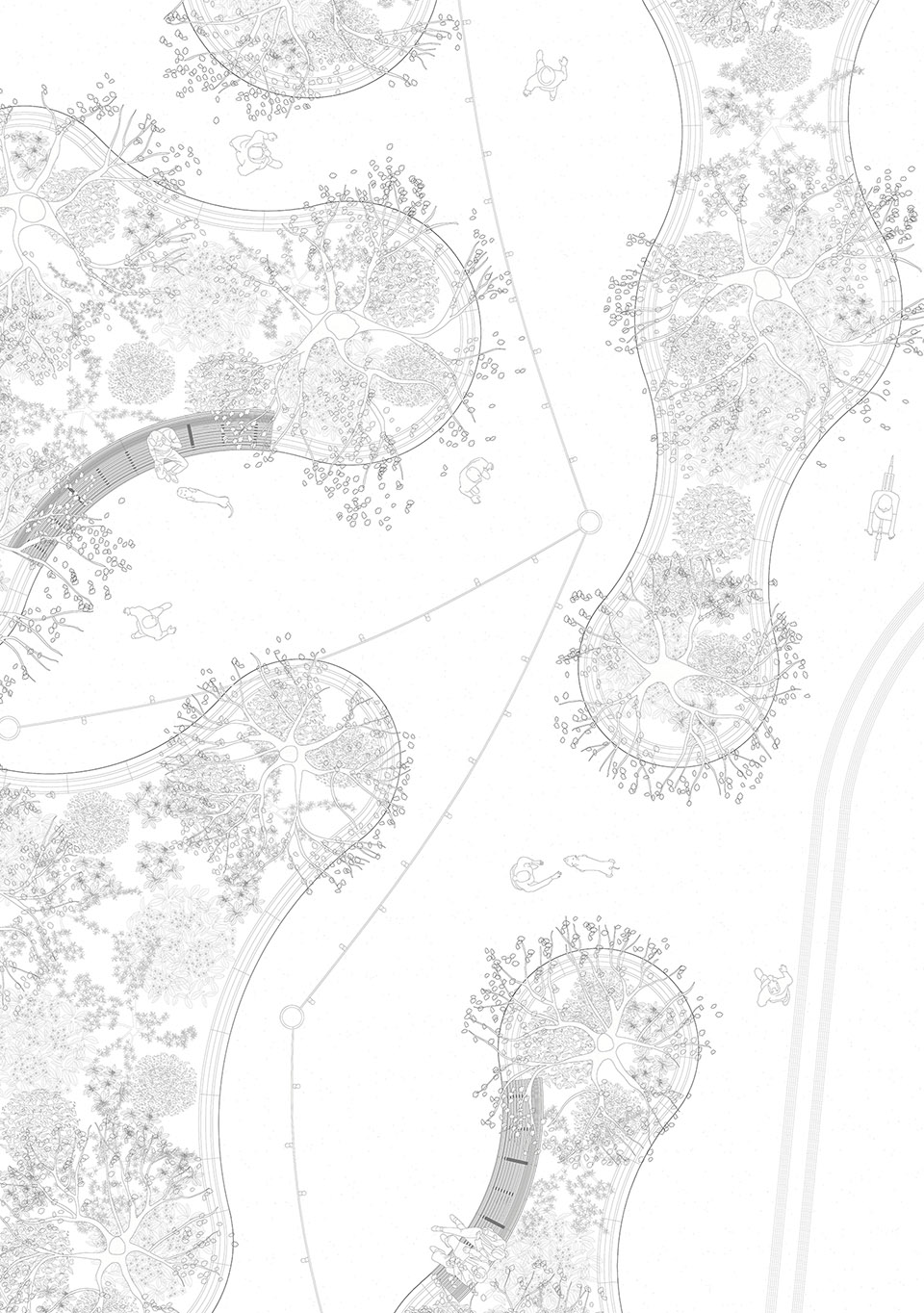
▲局部平面圖,partial plan
Competition: BUREAU (Daniel Zamarbide – www.bureau.ac) with Leopold Banchini Architects (www.leopoldbanchini.com)
Realization: BUREAU | Daniel Zamarbide, Carine Pimenta, Galliane Zamarbide (www.bureau.ac)
Location: Plateau de Champel, Geneva, Switzerland
Program: Landscape planning for the public space around Champel station for CEVA rail line.
Lead architects: Jolan Haidinger, Joana Croft, Vanessa Pointet
Design Team: Anna Scorretti, Lilian Pala, Luísa Pires, Mélanie Ganino, Pauline Tondreau, Peter Bauer, Thibault Pierron, Andreina Mosquera
Partners: Thomas Jundt ingénieurs Civils SA, Alfred Forster AG
Completion date: June, 2020
Area: 14’225 m2 gross, 9’656 m2 of public space, 2’416 m2 of planted surface
Photography: Dylan Perrenoud – digital camera, Guillaume Collignon –analog photography, medium format
135 oak trees employed: Quercus Acutissima, Quercus Castaneifolia, Quercus Cerris, Quercus Frainetto, Quercus Petraea, Quercus Pubescens, Quercus Robur
7’239 perennial plants and shrubs employed: Abelia grandiflora, Amelanchier rotundifolia, Aquilegia vulgaris, Artemisia arb.‘Powis Castle‘, Berberis vulgaris, Campanula latifolia, Campanula rapunculoides, Carex foliosissima, Carex ornithopoda, Choysya ternata, Colutea arborescens, Cornus mas, Cornus sanguinea, Corylopsis pauciflora, Cowdalis lutea, Daphne laureola, Dryopteris filix-mas, Erigeron karwinskianus, Euphorbia characias ssp. wulfenii, Fragaria vesca, Geranium cantabrigiense, Geranium macrorrhizum, Geranium sanguineum, Hamamelis mollis, Hedera colchica ‘Arborescens’, Heuchera sanguinea, Hydrangea quercifolia, Ilex crenata, Ligustrum ovalifolium, Ligustrum vulgare ‘Atrovirens‘, Lonicera nitida, Lonicera pileata, Luzula nivea, Malva moschata, Origanum vulgare, Osmanthus heterophyilus ‘Gulftide‘, Osmanthus x burkwoodii, Phlomis russeliana (samia), Polystichum aculeatum, Polystichum setiferum, Rhamnus catharcticus, Ribes alpinum, Staphylea pinnata, Stipa gigantea, Viburnum lantana, Waldsteinia ternata
版權(quán)聲明:本文版權(quán)歸原作者所有����,如有侵犯您的權(quán)益請(qǐng)及時(shí)聯(lián)系�,我們將第一時(shí)間刪除���。
投稿郵箱:info@landscape.cn
項(xiàng)目咨詢:18510568018(微信同號(hào))
 京公海網(wǎng)安備 110108000058號(hào)
京公海網(wǎng)安備 110108000058號(hào)


























